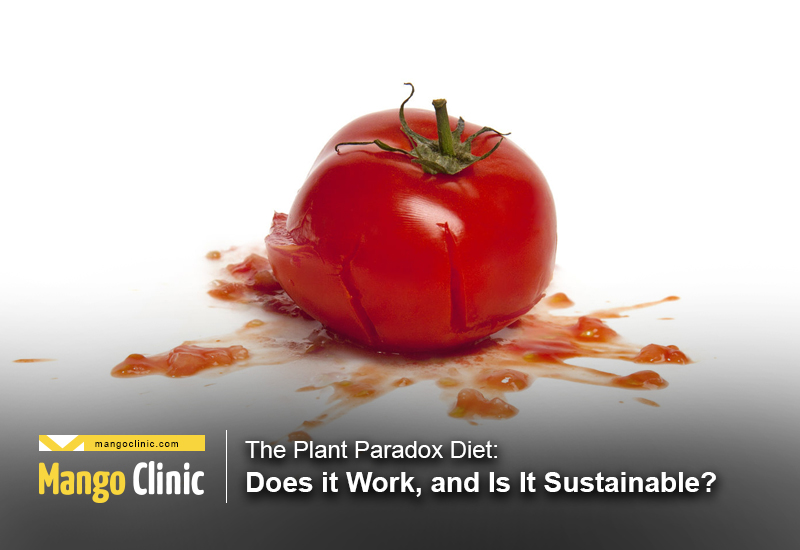The Plant Paradox Diet: Does it Work, and Is It Sustainable?

The plant paradox diet is based on the idea of avoiding food that contains lectins. Lectin is a type of protein found mostly in plants. When taken in small amounts, lectins have been shown to provide numerous health benefits and weight loss treatments; however, they reduce the body’s ability to absorb nutrients when taken in larger quantities.
Get effective weight loss treatment from expert physicians. Click the button below to book your appointment.
Steven Gundry, an American doctor, and author featured the plant paradox diet in one of his diet books, explaining why certain foods can harm your body and even promote weight gain. This diet has been a topic of discussion, attracting varied views and criticism.
Table of Contents
Why Lectins?
Lectins are naturally occurring carbohydrate-binding proteins. They serve as a protective function for plants and are found mostly in grains, legumes, and nightshade veggies such as eggplants and tomatoes.
According to Dr. Gundry, lectins cause increased gut permeability, which drives autoimmune diseases. He argues that these proteins are toxins, which plants rely on to survive, and humans should avoid them as they can cause severe complications such as intestinal damage and inflammation.
A body trigger causes this inflammation as it tries to fight the “foreign” lectins, which passed through the intestinal barrier. Inflammation then triggers the production of fat-storing hormones, which the body uses as fuel to fight off these proteins.
As this autoimmune reaction continues, more fat is produced and stored in the body, leading to weight gain. This protein also depletes the body’s gut microbes, which helps in maintaining a healthy weight. Lectins found in most grains are gluten and wheat germ agglutinin (WGA), which plays a role in weight gain.

The Controversy
Research shows that cooking destroys most of the lectins in foods. This weakens the proteins’ ability to bind to human cells. The Plant Paradox Diet suggests that all foods with lectins are harmful to the human body, while several studies indicate that many are safe, nutritious, and healthy.
Getting Started with the Plant Paradox Diet
If you’re going to implement this dieting plan, there are two specialized programs you can choose to follow. One is the high fat, low carb ketogenic meal plan (for cancer patients), and a 3-day detox-dieting plan – for people trying out the Plant Paradox Diet for the first time.
The detox program follows a strict lectin-free diet for 3 days, coupled with a daily routine of light exercises and at least 1.9 liters of water, decaf coffee, or tea. The ketogenic diet for cancer patients is a long term-commitment dietary schedule that comes with several health benefits. This is, however, not a replacement to all the other cancer treatment options.
While the plant paradox diet is restrictive, there’s no structured program and options for someone who would need a customizable plan to suit their unique dieting goals. That said, there’s a list of food to eat and food to avoid, making sure your everyday meal doesn’t reduce the body’s nutrient absorption.
Get help from weight loss doctors for excessive weight gain. Click the button below to book your appointment.
Foods to Avoid
According to the Plant Paradox Diet, certain foods contain higher levels of lectins and several other compounds that Dr. Gundry considers a threat to human health. We’ve grouped them for you, so it’s easy to identify and avoid if you’re on this dietary plan:
- Starches: Potatoes, whole grains, rice, wheat, pasta, cookies, pastries, corn, oats, barley, quinoa, and crackers.
- Proteins: All beans and legumes, soy products, and farm-raised seafood, including fish.
- Fruits: All types of fruits except berries.
- Vegetables: Tomatoes, eggplant, bell peppers, and other nightshades. Pumpkins, cucumbers, zucchini, and other squashes.
The other foods to avoid are chia seeds, sunflower seeds, peanuts, and pumpkin seeds. Dairies in this category are all A1 milk products, cottage cheese, Greek yogurt, and American cheese. You would also want to stay away from vegetable fats, corn, peanut, and sunflower oils.

Lectin-free Foods
On the list of safe foods on the Plant Paradox Diet are:
- Starches: All grain-free products, sweet potatoes, parsnips, and plantains.
- Proteins: Free-range eggs, finished meats, pasture-raised poultry, and wild-caught fish.
- Fruits: Coconut, avocadoes, and berries.
- Vegetables: Spinach, carrots, mushrooms, kale, broccoli, okra, beets, and cabbage.
Lectins-free dairy products include organic sour cream, natural cheese, goat’s milk, and cheese. Nuts such as macadamia, walnuts, and hazelnuts fall in this category. Avocado oils, coconut, and grass-fed butter are also lectins-free. As much as you want to stick with this dietary plan, Dr. Gundry hints that you can select a few of the banned veggies such as tomatoes and bell peppers – provided you peel and remove the seeds.
Are you struggling with weight loss? Click the button below to book your appointment.
Wrapping Up
Whether the Plant Paradox Diet works or not depends on your specific dietary needs. If you’re relying solely on this diet to lose weight, you may not see significant changes in the long run. This is because they don’t include any calorie restriction strategies, which is a prerequisite to losing weight.
It’s also worth noting that this diet plan eliminates more processed foods, which may lower calorie intake. This is an added advantage for someone looking to cut the extra calories. For an evidence-based, healthy weight-loss program, contact us at Mango Clinic or click the banner below to book your appointment.




